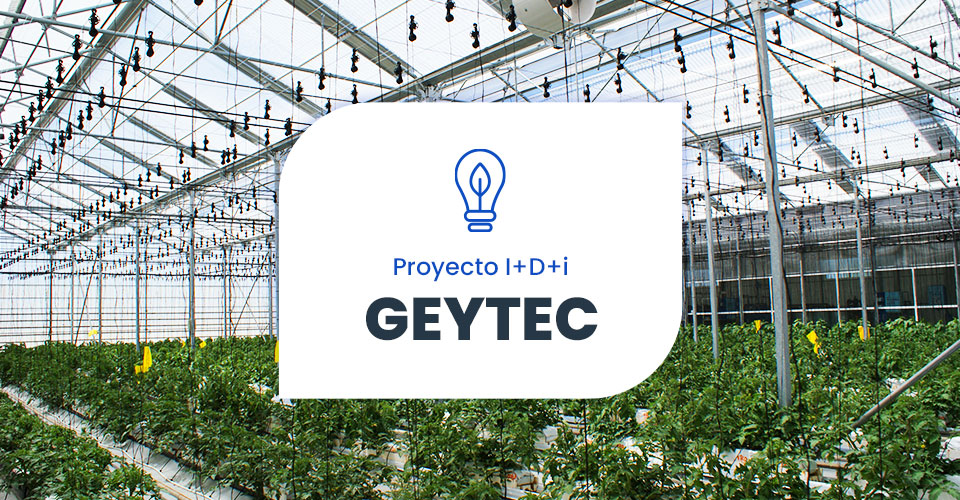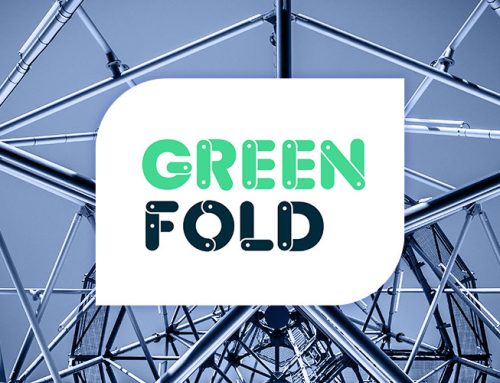GEYTEC. New model of Photovoltaic Greenhouse
Design of an electrically powered photovoltaic greenhouse model to improve farm profitability.
For some years now, companies in the agricultural auxiliary industry have been researching various formulas to improve the profitability of farms under plastic and among them, we can highlight the one carried out by the company NOVAGRIC through the GEYTEC project.
This research project, carried out over two years, demonstrated that it is possible and compatible to produce vegetables under plastic with the generation of photovoltaic electricity by placing solar panels on the greenhouse roof.
There are several questions to be asked about the pros and cons of these structures.
To answer these questions, NOVAGRIC carried out the GEYTEC research project by designing a greenhouse specially adapted to these circumstances, in which aspects such as the following have been taken into account:
- The slope of the roof for better solar gains
- Adequate greenhouse height to minimize concentrated shadows on the crop
- Use of plastics with high solar radiation diffusion capacity in order to avoid shadows
- Greenhouse structure redesigned to withstand the overloads produced by solar panels
- Proper compliance with the structural standard for commercial greenhouses en 13031-1
Results of the photovoltaic energy project
The results obtained during two years of research have been very encouraging, since the two problems that a priori arose have been satisfactorily resolved. First of all, the tomato production obtained under these conditions achieved good results both in quantity and in the quality of the commercial product, so that the doubts that were harbored about the effect of the shading produced by the solar panels located on the greenhouse roof did not have negative consequences on the crop. This is mainly due to the fact that in our latitudes there is an excess of solar radiation, especially in spring and summer, together with the technical measures taken in the design such as: reduced percentage of roof coverage with panels, non-concentrated arrangement of the solar panels, design height and use of rigid plastics with high diffusion capacity. Secondly, the new design of the greenhouse structure together with the use of amorphous silicon photovoltaic panels amorphous silicon photovoltaic panels instead of the typical crystalline silicon panels with high weight has allowed to adequately support the loads transmitted by the solar panels to the structure, having satisfactorily passed the evaluations of the structural behavior of the greenhouse. In addition, this new design has opted for a rigid polycarbonate roof so that both the maintenance costs of the photovoltaic installation and the maintenance of the greenhouse roof are reduced to a minimum, since it is not necessary to change the plastic every two or three years, and therefore it is not necessary to dismantle the electrical installation and the solar panels themselves.Advantages of the new photovoltaic greenhouse model
Regarding the advantages of this new greenhouse model, it should be noted that thanks to the use of photovoltaic panels and the excellent degree of sunshine in Almeria, farmers can obtain an extra yield in the form of electrical energy.which can be used for self-consumption or sold to electricity companies for distribution to the grid, allowing this additional income to be used for the production of electricity. amortization of the initial investment plus a profit margin, which can be obtained on a recurring basis throughout the lifetime of the solar panels. In addition, the profitability of this investment will increase every year because the cost of energy is expected to rise considerably, and the cost of the photovoltaic panels will gradually decrease. These types of greenhouses are very interesting because they develop strategic lines such as the reduction of dependence on fossil fuels, the production of clean energy, the promotion of self-consumption of electricity and localized energy production in areas of consumption. This is why it is foreseen that support for this concept will not be forthcoming in the very long term.Categorías
Últimas novedades
- This Christmas, agriculture takes shape at Novagric
- HORT2THEFUTURE. Oxygen irrigation to improve soils
- HORT2THEFUTURE. Oxygen irrigation to improve soils
- GREENFOLD. Foldable and Reusable Greenhouses
- DARkWIN. Project to improve crops in the face of climate change
- +PreVENT. Positive pressure system for ecological greenhouses
- Novagric develops Solidarity Agricultural Projects
- Carbon Fertilisation Levels in Greenhouses
- How to control the climate during carbon fertilisation
- i-GROW. Protected crop management support systemtivos protegidos






